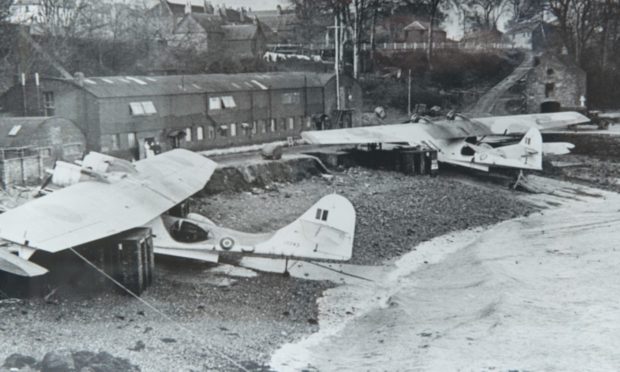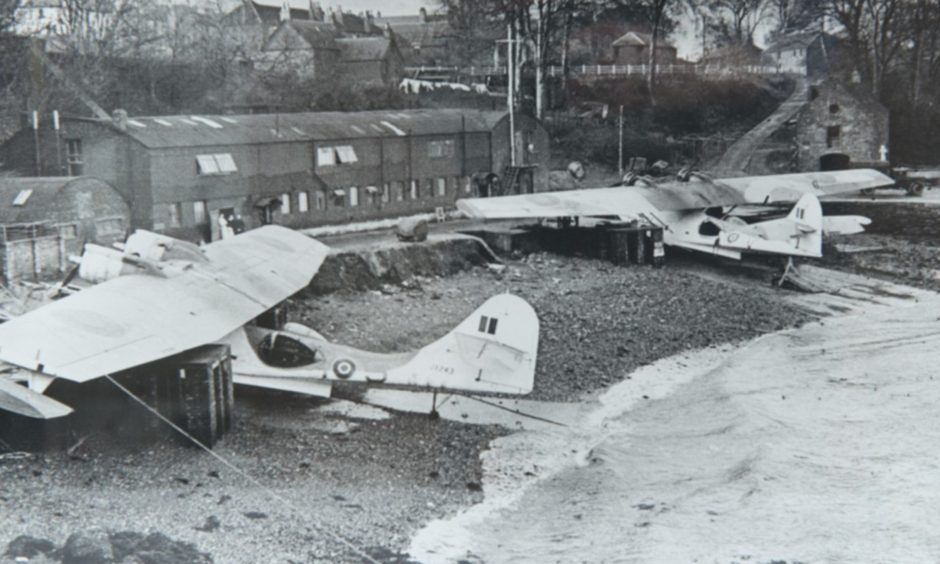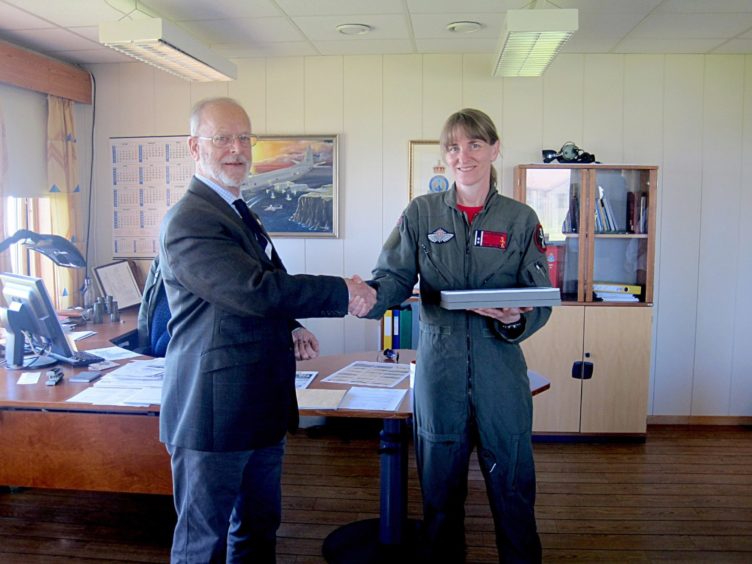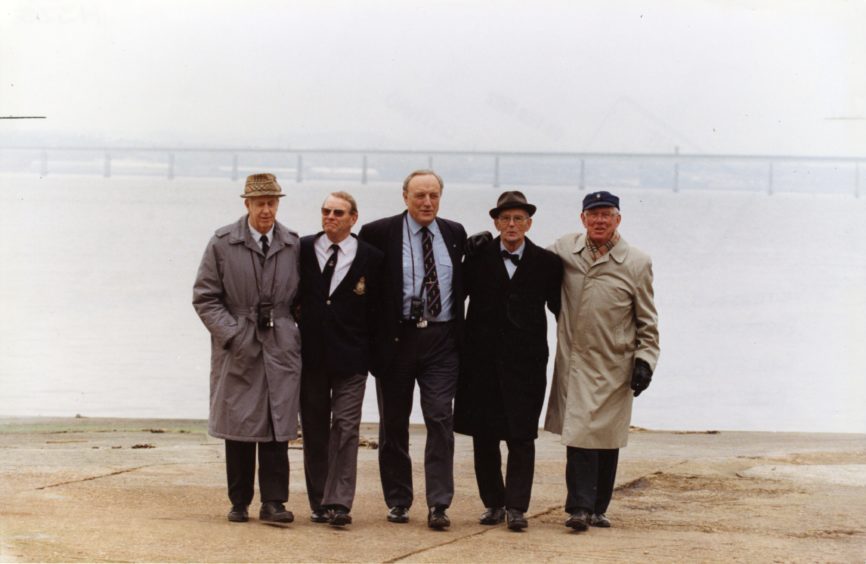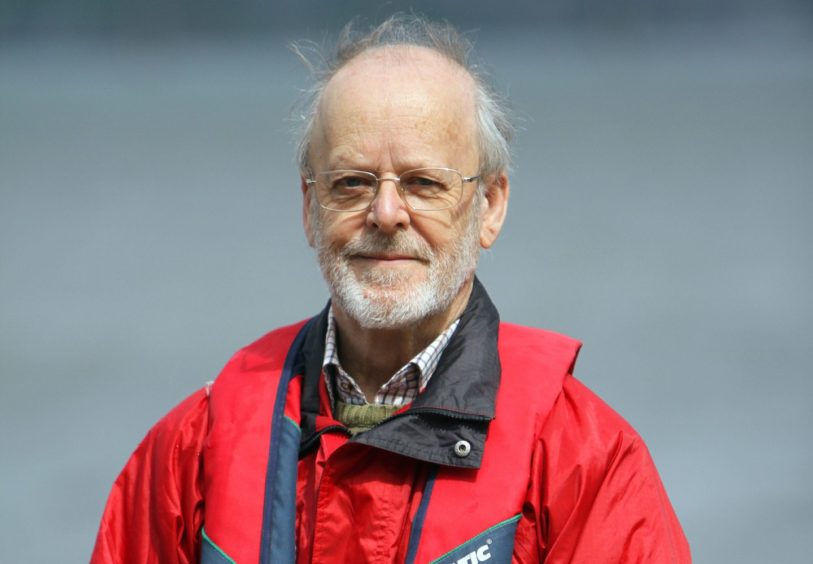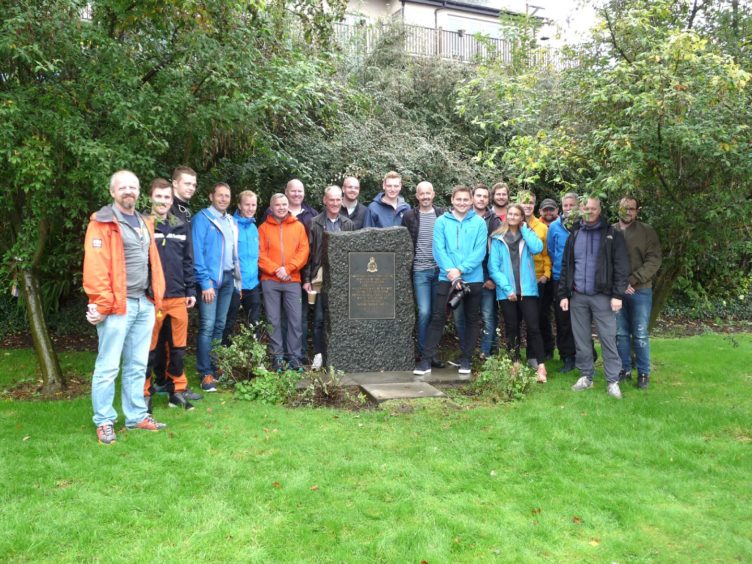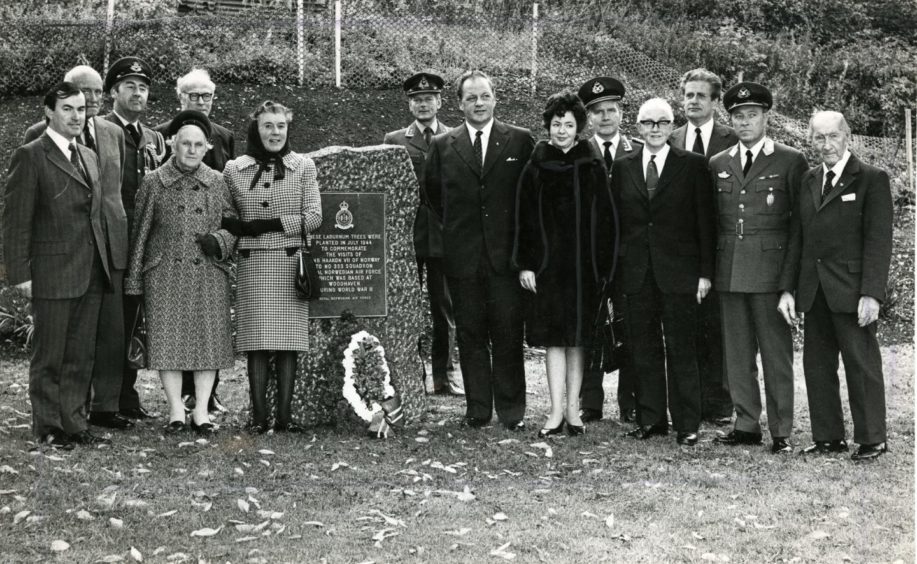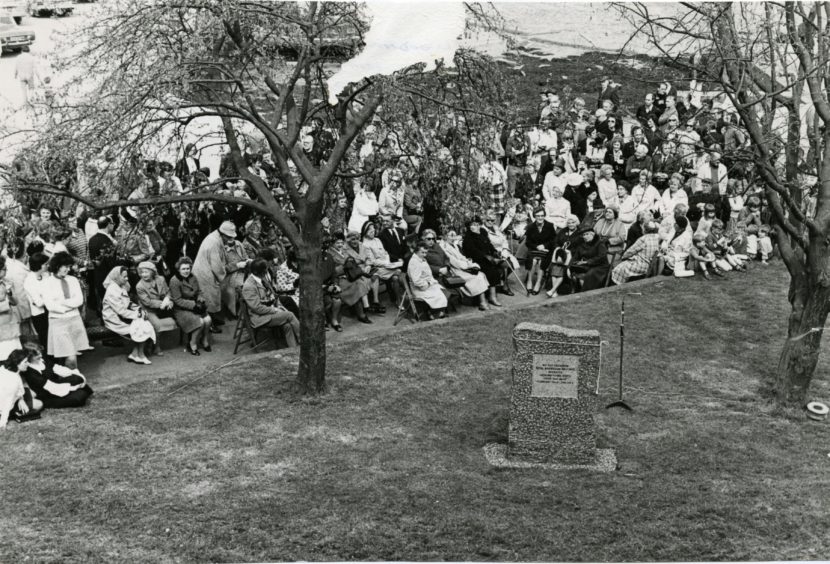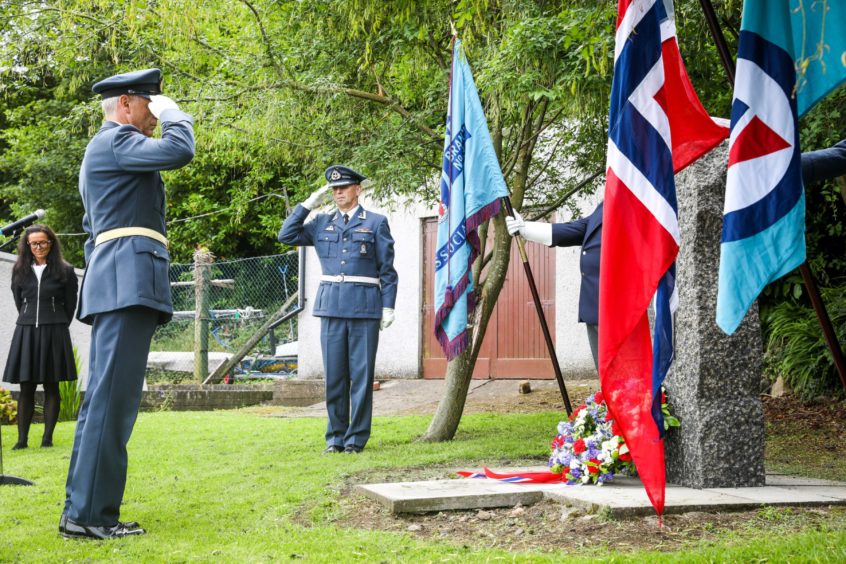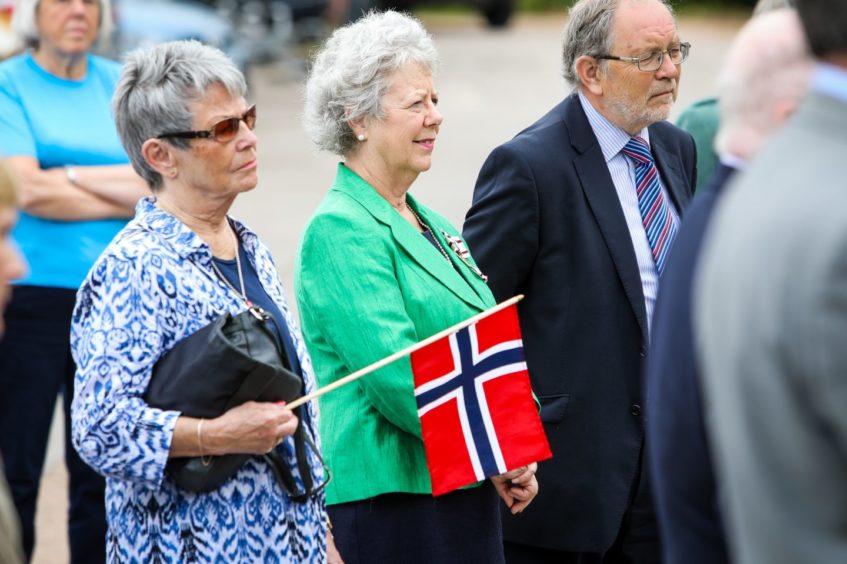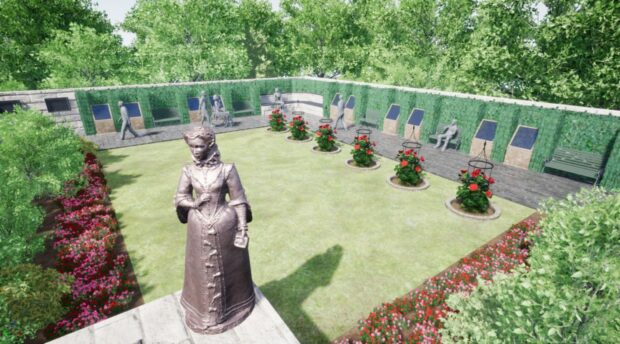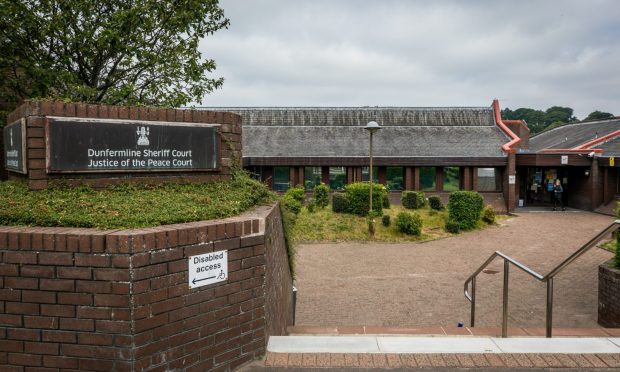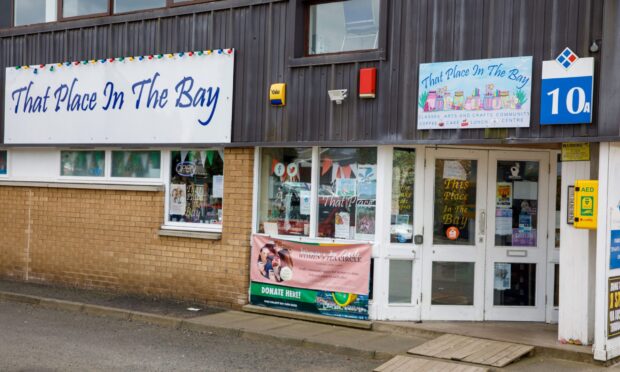Michael Alexander discovers why the 80th anniversary of the Royal Norwegian Air Force 333 Squadron ‘s creation in Wormit during the Second World War will stir up mixed emotions on both sides of the North Sea.
Somewhere between the annals of legend and history, the east coast of Fife features prominently as the place where in 877AD, Danish Viking invaders put King Constantine of the Picts to death either at Constantine’s Cave near Fife Ness or at the Battle of Inverdovat, near Newport.
However, when the Norwegian flag was raised at Woodhaven, Wormit, on February 8, 1942, to signify the formation of 333 Squadron of the Royal Norwegian Air Force, these very different 20th century Viking invaders were welcomed with open arms.
Catalina flying boats based on the Tay
As the Second World War raged, Woodhaven became home to the Norwegian squadron’s Catalina flying boat station from 1942-45, while exiled Norwegian personnel were based five miles away at RAF Leuchars.
They flew clandestine missions to Nazi-occupied Norway and carried out reconnaissance and anti-submarine tasks until they moved to Scandinavia in 1945.
Today, 333 Squadron is the only Norwegian squadron in continuous operation since the war where it now specialises in maritime patrol, search and rescue and fishery surveillance.
Seventy-six years after hostilities ended, only a handful of Second World War veterans are still alive.
However, the cultural links between Woodhaven and Norway live on.
Ties across the North Sea
In 2017, a number of surviving veterans took part in 75th anniversary commemorations at the squadron’s base at Andenes, in northern Norway, and a “Commemorative Album” was produced in Wormit to present to 333 Squadron Royal Norwegian Air Force.
In 2019, a Royal Norwegian Air Force ceremony took place at Woodhaven celebrating the 75th anniversary, while there have been visits to Wormit during non-Covid-19 times from modern day squadron personnel and descendants of those who served there.
Talks have also been given to the Norwegian Scottish Society in Edinburgh and Glasgow while a visit took place from three lecturers from the Royal Norwegian Air Force Academy Trondheim.
David Winch: ‘A fantastic experience’
One man who has been heavily involved in maintaining these links for more than 25 years is David Winch.
The now 81-year-old had not long moved to Wormit with his wife Jan when, in 1975, a commemorative stone and flagpole were presented by veterans of the squadron to renew ties between the two communities.
It was when David joined the Wormit Boating Club – later becoming commodore in the mid-1990s – however, that he learned more about the ties and he has been heavily involved keeping them going since.
“It’s been a fantastic experience,” he says.
“Every now and again we get a phone call from 333 Squadron saying ‘we are at Kinloss or Lossiemouth or somewhere on an exercise, can a few of the crew come down?’
“The boating club has always come up trumps laying on some snacks and showing them around the remnants of what’s left. It’s mushroomed from there.”
David said recent visits included the grandchildren of three members of the first operational mission by 333 Squadron on April 17, 1942.
The family of Lt H. Mensen visited in August 2013 and had planned to come again last year but will re-plan when Covid-19 allows.
The others were Kari-Helene (in June 2019), granddaughter of Egil Johansen; Gary and Gavin Gibson (in March 2019), grandsons of Johan Hansen Just who was wireless operator/air gunner on that first mission.
Passing of Torjbørn Haugen a ‘shock’
When Torjbørn Haugen, Wormit’s main Norwegian contact for over 20 years, died in 2020, it was not unexpected due to a long illness.
However, David says it was a shock none-the-less, and has made the squadron and those at Woodhaven realise how big a part he played in teaching young squadron members the significance of Woodhaven and bringing them to see it for themselves.
A spokesman for 333 Squadron says: “To me, it feels more important than ever that we manage to keep the bonds Torbjørn has managed to create. I hope we can stay in touch in the future to maintain the knowledge of the squadron’s history and legacy for future generations.”
Of course there have been no visits since September 2019 due to Covid-19.
But the squadron is planning to come as soon as operational and health circumstances allow when the current CO intends “to plan a trip to Wormit with some of our new crews.”
333 Squadron – forged in war
333 Squadron was formed in Scotland on February 8 1942 as the fourth Norwegian Squadron within the RAF.
The Norwegian flying pioneer Commander Finn Lambrechts was, as a commercial pilot in occupied Norway, aware of the great distances between enemy positions on the mid-Norwegian coast.
After his escape from Norway in 1941, he persuaded the RAF to let him establish a Norwegian unit to carry out clandestine operations.
In February 1942, along with colleagues from the Royal Norwegian Naval Air Service, he established his base at Woodhaven on the Tay – chosen for its relatively secluded location.
The first aircraft, a Consolidated Catalina Mk I, arrived on February 19 1942 and was named ‘Vingtor’ after the mythological Viking god “Tor”.
Other Catalinas (
Mka.IB/IIIA/IVA
) were also used to ferry agents to and from occupied Norway as well as for anti U-boat, convoy escort, ice reconnaissance and search and rescue operations.
During May 1943 ‘B’ Flight was established at RAF Leuchars equipped with de Haviland Mosquito Mks II and VI tasked with anti U-boat operations and shipping reconnaissance off the Norwegian coast.
In September 1944, ‘B’ Flight moved to RAF Banff as reconnaissance ‘outriders’ and fighter cover for the Banff and Dallachy Strike Wings.
333 Squadron flew home in June 1945 to a free Norway basing ‘A’ Flight in Oslo and ‘B’ Flight at Gardermoen.
Later that month ‘B’ Flight was reformed as 334 Squadron and 333 Squadron contributed to the rebuilding of Norway after the war by flying people, goods and medical supplies.
Various relocations and re-equips followed as the increasing strategic importance of the Barents and Norwegian Seas during the Cold War called for better equipment.
In January 1963, 333 Squadron moved to Andøya Air Station, near the village of Andenes at the northern end of the island of Andøya in the Vesterålen archipelago.
The last updating took place in 1999, when the aircraft was updated to P-3C UIP.
Clandestine operations
Looking back at the history, David says it’s interesting to trace how the Heinkel 115N float plane, which 333 had at Woodhaven for a short while, had earlier sowed the seeds for the formation of 333 Squadron.
He’s also interested that many details about the clandestine operations during wartime along the coast of Heligoland have since come out.
“They would drop agents in, flying in daylight – because it was daylight a lot of the time anyway – and take them off again,” he says.
“There was one exciting rescue early on where at very short notice they rescued a family – even a small child.”
Mixed emotions of 80th anniversary
However, when the 80th anniversary of the squadron is marked in 2022, there will be mixed emotions because the Andøya Air Station base at Andenes is scheduled to close in 2023.
This will see the squadron transferred to a multi-role base developing at Evenes on the mainland and flying an upgrade of their Orion surveillance aircraft.
“The 80th anniversary will be a big celebration, but it will be a difficult time for the town of Andenes and the island of Andoya which will be losing a major employer with very little to take its place,” says David.
“They are getting a new aircraft – the Orion P8 which is an upgrade from what they’ve got.
“They’ll be improving their capability for maritime surveillance work.
“They are an important Nato outpost to monitor the Russians coming round, and also submarines they deal with and so forth. The next anniversary is good, but it will be one with mixed emotions.”
Dwindling veterans
Inevitably the dwindling of veterans and a relatively small group of Wormit volunteers keeping the links going becomes more pressing with time.
However, David says the big thing from the Wormit point of view is that the squadron, after all these years, still makes the effort to come and see where they were formed.
He is also grateful to Fife Council for their “tremendous support” over the years which has enabled the area around the commemorative stone at Woodhaven to be kept in good order.
“The link has been maintained by a relatively few number of people,” he says.
“Before Torjbørn Haugen died, he and I really worked in tandem over the last 20 years or more to keep things going. He was very keen to keep it going on his side.
“The boat club have always been supportive but there’s not many people who would take over what I’ve been doing when I pop my clogs eventually!
“Evelyn Hardie and Ralph Webster are very keen to keep it all going because they live in the house where they were looked after during the war – Sandford House.
“But the more people who know about it the better.”
